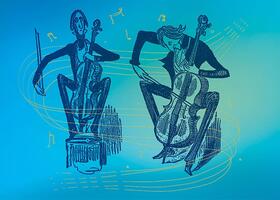Cycle Cello, the soul of romanticism
Impressive both in its technical possibilities and in its expressive potential, the cello established itself as a leading protagonist in the music world of nineteenth-century France.
The Romantic period represented a pinnacle in the history of the violoncello, following the instrument’s upsurge in popularity in the eighteenth century. A change in thumb position facilitated playing in the upper register and gave the left hand greater virtuosity, in particular by making it easier to perform double stops on the part of the neck closest to the bridge. Given prominence by the greatest composers of the time, the instrument was finally freed from its traditional role as accompanist. A body of literature written by cellists also appeared, exploring the instrument’s technical, but also expressive limits. As a result, more composers discovered the possibilities of the cello, whose lyrical qualities were so appropriate to the aesthetics of the time.

